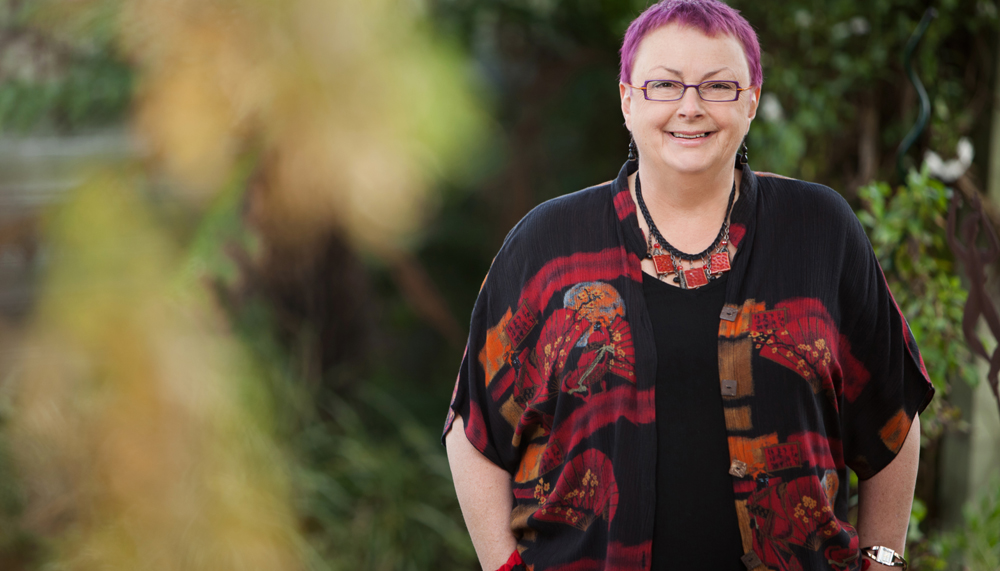Sandy Anderson is a women's health nurse and practice nurse at the Baarlinjan Medical Clinic at Ballarat and District Aboriginal Cooperative.
Last year, Sandy was awarded the ASHM/NSW STIPU/GPV Best Practice Nurse Award for Sexual Health for her work in developing Koori regional women's cervical screening, and improving the quality of sexual health among women in the region.
What are the most rewarding parts of your job?
The most rewarding part of my job is seeing an increasing number of women access our nurse-led clinics, and for me seeing the peace of mind women have after knowing that their pap smear or BreastScreen is up-to-date and women's health questions answered.
What are the most challenging aspects?
What I find most challenging is engaging women and building trust. While I have worked at the clinic for two years and previously worked jointly with clinic staff on women's health, regularly visiting the clinic for over five years, I continue to have to work hard on building trust with the community.
I am fortunate in the clinic to have access to the patients through the medical director and can then get in contact to get their permission to identify their screening history, then working with the women to get their screening updated.
It is totally different from working with the non-indigenous population as many indigenous Australians are, sadly, struggling with basic issues such as safety, shelter and the impact of low income.
Despite wonderful local work to continue building relationships between large mainstream services and the clinic, many women still need support when accessing further treatment in a mainstream service. My role enables me to provide that one-on-one support.
One of the challenges faced is that there is quite a large proportion of the community who move frequently and this can mean important follow-up is lost, but due to close work with both the Victorian Cervical Cytology Registry and BreastScreen I have, with the woman's permission, been able to build their complete screening history and ensure they get appropriate follow-through.
When I worked in a mainstream organisation, my biggest challenge was to find a way to work with my community.
For many years I built a relationship with BADAC staff and would offer to help work on any of the health promotion priorities ... and stayed in there doing this for the long-term. I was prepared to do any task to be involved. One year, I staffed the animal nursery at a NAIDOC week celebration.
How is this helping to close the health gap between indigenous and non-indigenous Australians?
Every Australian indigenous woman who is undertaking routine screening is more likely to have a better health outcome. Research indicates that Australian indigenous women are four times more likely to die of cervical cancer and with breast cancer are more likely to have a poorer outcome after diagnosis and treatment at five years due to later detection.
The clinic has increased cervical screening for Aboriginal women by over 20 per cent and has a BreastScreen two-yearly rate of 42 per cent of the community.
The official aim is achievement of Aboriginal and Torres Strait Islander health equality by 2030. What role do you think nurses can play in getting there?
Nurses have a very important role to play, whatever the setting in which they work, ensuring that there are good processes to make indigenous Australians comfortable to identify their status and regularly reviewing your service data to identify how many indigenous people you see.
Aim to seek partnerships with Aboriginal Community Controlled Organisations or other mainstream organisations which are successfully engaged with the community to build capacity. Nurses have an important role as they have a trusted role in the community and therefore can play an important part in breaking down the stigma that some of the community have experienced in accessing mainstream services.
What advice would you give to a nurse looking to make a move into working in this field?
Increase your understanding about Australian indigenous issues and look for an opportunity to work collaboratively with your local service. Then you will be in a better position when job opportunities come up.
Do you have an idea for a story?Email [email protected]
 Aged Care Insite Australia's number one aged care news source
Aged Care Insite Australia's number one aged care news source

